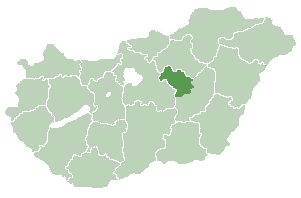
Map of Hungary
http://www.1hungary.com/info/jaszbereny/
Jaszbereny is the cultural and economic centre of the Jaszsug region and the Jasz people. It is situated 80 km from Budapest, 40 km from the Matra hills, surrounded by the river Zagyva. The town with about 28,000 inhabitants has special geographical, ethnographical and historical features being situated on the north-western edge of the Great Hungarian Plain. Jazygians of Iranian origin settled down in the region along the rivers Zagyva and Tarna along with the Cumans in the 13th century. The Hungarian kings donated privileges to the Jasz people. After the Turkish rule, in 1702 emperor Leopold I sold the territory to the Teutonic Knights. As a result, the Jasz people lost their privileges. In 1745 they collected half a million Rhenish gold forints using their own resources and paid it to the treasury. In return, Maria Theresa gave back their privileges and land to them. This was the so-called Redemptio (redemption). The position of the town became stronger after 1745 and it started to develop quickly. This development was slowed down by the fact that the Jaszkun-Tripartite District, the centre of which was Jaszbereny, was terminated in 1876.
The Jasz Museum founded in 1874 is one of the oldest museums of Hungary. It houses a permanent exhibition, which presents detailed information about the events of the past. Our national relic, the symbol of the town Jaszbereny, the Lehel horn can be seen here. The town is rich in listed monuments, public statues and works of folk art. There are several possibilities for the visitors to spend their free time: the Jasz Museum, the regular and temporary exhibitions of the Hamza Collection and the Jasz Gallery.
http://en.wikipedia.org/wiki/Jassic_people
The Jasz (Jassic) people were a nomadic tribe which settled in the Kingdom of Hungary during the Thirteenth century. Their name is almost certainly related to that of the Iazyges, one of the Sarmatian Alanic tribes which, along with the Roxolani, reached the borders of Dacia during the late First century BC. Residual elements of these tribes, ancestors of the Jasz, remained behind in the central North Caucasus, mingling with Caucasian peoples to form the present-day Ossetes (Ossetians).
The Jasz came to Hungary, together with the Cumanians from the East, including Moldavia, chased by the Mongol-Tatars. They were admitted by the Hungarian king, Bela IV Arpad, hoping that the Jassics would assist in resisting a Mongol-Tatar invasion. Shortly after their entry, the relationship worsened dramatically between the Hungarian nobility and the Cumanian-Jassic tribes, which then abandoned the country. After the end of the Mongol-Tatar occupation they returned and settled in the central part of the Hungarian Plain.
Initially, their main occupation was animal husbandry. During the next two centuries they were fully assimilated into the Hungarian population, their language largely disappeared, but they preserved their "Jassic" identity and their regional autonomy was preserved up until the year 1876. Over a dozen settlements in Central Hungary (eg. Jaszbereny, Jaszarokszallas, Jaszfenyszaru, Jaszalsoszentgyorgu) still hold their name.
Language
The only literary record of the Jasz language was found in the 1950s in the Hungarian National Szechenyi Library. The language was reconstructed with the help of various Ossetian analogies.
Home
Jassic people
Site of Jaszbereny
|